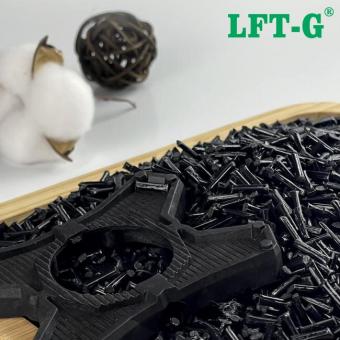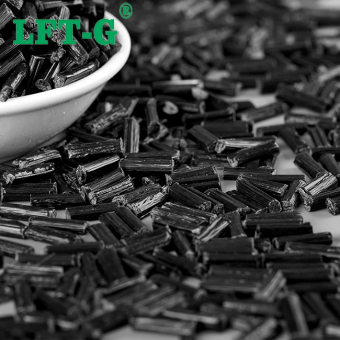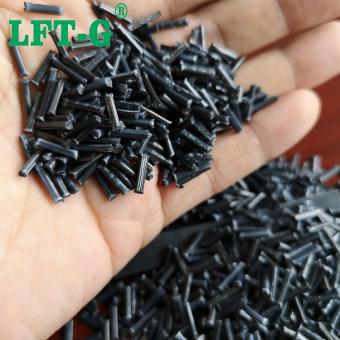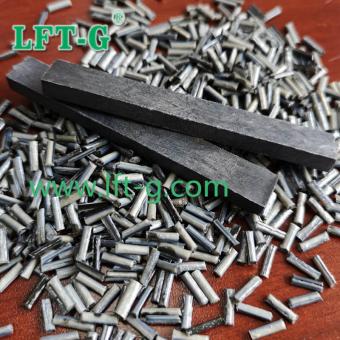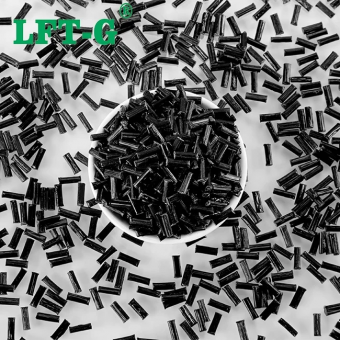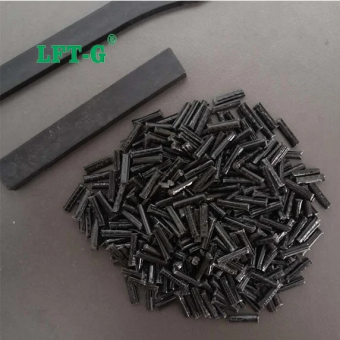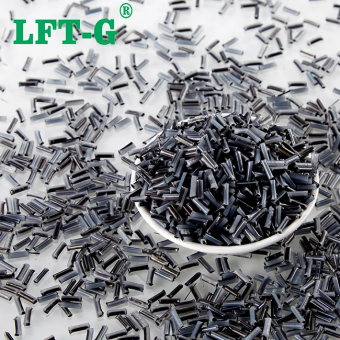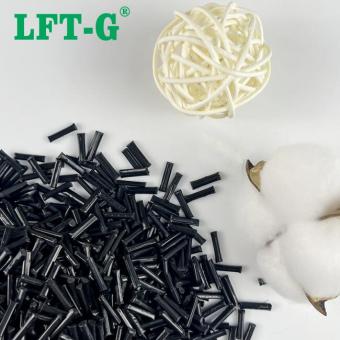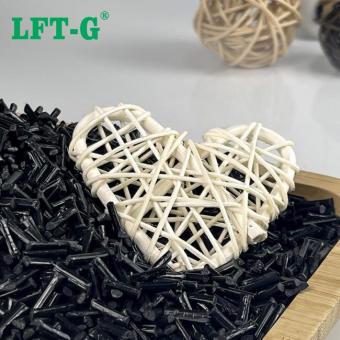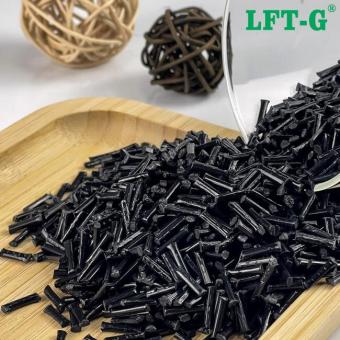Long carbon fiber is a new material with high strength and high modulus and excellent mechanical properties. It is a microcrystalline graphite material obtained by carbonization and graphitization of organic fibers. Its specific gravity is less than 1/4 of steel, and its strength is higher than that of steel. Corrosion resistant, high modulus, no melting. And a variety of resin substrates after impregnation extrusion molding into pellets, long carbon fiber polymer. Can be used for direct molding products. In recent years, it has been widely used in aerospace, mechanical and electronic chemicals.
-
Homo Polypropylene Carbon Fiber Modified with Excellent RigidityHomopolymer PP long carbon fiber reinforced composite offers exceptional stiffness, lightweight performance, and enhanced dimensional stability for structural applications.
- PP CF
- pp filament
- what is carbon fiber
- what is carbon fiber used for
- chemical composition of carbon fiber
- carbon fiber manufacturer china
Tags :
-
Carbon Fiber PPS Plastic High Impact Resistance for EngineeringLFT long carbon fiber reinforced PPS material combines superior thermal stability and high mechanical strength, making it perfect for high-performance applications. Its excellent resistance to wear, chemicals, and high temperatures ensures long-lasting reliability in challenging environments.
- pps plastic
- carbon fiber reinforced plastic
- what is pps
- pps cf
- pps properties
- modified plastic
Tags :
-
LFT PLA Manufacturer Carbon Fiber filled Compounds green materialsPLA long carbon fiber reinforced materials offer improved strength, stiffness, and dimensional stability compared to standard PLA, while maintaining its biodegradability. They are ideal for eco-friendly applications requiring lightweight and enhanced mechanical performance.
- PLA recycled
- automotive thermoplastic composites
- pla green materials
- PLA Carbon
- carbon fiber pellets
- can pla be recycled?
Tags :
-
LFT Long Fiber PEEK High Mechanical Properties Plastic for DroneLFT long carbon fiber reinforced PEEK material offers unmatched strength, stiffness, and exceptional resistance to high temperatures and chemicals. Its superior durability and dimensional stability make it ideal for demanding aerospace, automotive, and industrial applications, where performance and reliability are crucial.
- carbon thermoplastic
- why PEEK so expensive
- peek carbon
- reinforced carbon fiber
- peek composite
- peek supplier
Tags :
-
PPS High Temperature Resistance with Glass FiberPPS long carbon fiber reinforced materials combine excellent mechanical strength, high thermal stability, and outstanding chemical resistance. They are ideal for precision parts used in high-temperature, corrosive, or high-stress environments.
- pps resin suppliers
- long fiber compounds
- carbon fiber reinforced thermoplastic
- lft g for automobile market
- applications of polymers in aerospace engineering
Tags :
-
Engineering Plastic Polyamide 12 Carbon Fiber Modified PolymerPA12 Long Carbon Fiber Reinforced Composite is an advanced engineering material composed of a polyamide 12 (PA12) matrix reinforced with continuous long carbon fibers. It features outstanding chemical resistance, low moisture absorption, and excellent flexibility, while delivering high mechanical strength, impact resistance, and superior dimensional stability in harsh environments. Its low density and excellent processability make it ideal for lightweight, durable applications requiring precision and reliability.
- pa12 polymer
- pa12 pellets
- pa12 for sale
- carbon fiber nylon pa12
- nylon 12 material
- flammability properties
Tags :
-
LFT Polyamide 66 Plastic Carbon Fiber Modified Polymer ResinPA66 Long Carbon Fiber Reinforced Composite is a superior engineering material made from a polyamide 66 (PA66) matrix reinforced with continuous long carbon fibers. It offers exceptional tensile strength, impact resistance, and high thermal stability, along with excellent chemical resistance and dimensional precision under demanding conditions.
- materials nylon
- pa cf filament
- pa plastic material
- different kinds of carbon fiber
- strength carbon fiber
- pa6.6 cf
Tags :
-
Nylon Materials LFT Carbon Fiber Modified Polymer PelletsPA6 Long Carbon Fiber Reinforced Composite is a high-performance engineering material composed of a polyamide 6 (PA6) matrix reinforced with long carbon fibers. It delivers outstanding mechanical strength, rigidity, and fatigue resistance, while maintaining excellent dimensional stability and thermal performance.
- long fiber
Tags :
-
Polypropylene Carbon Fiber Modified with Excellent StrengthPP long carbon fiber reinforced composite is a high-performance lightweight material based on polypropylene matrix reinforced with long carbon fibers, offering excellent strength, stiffness, and fatigue resistance.
- pp cf
- polypropylene carbon fiber
- what are carbon fibers used for
- cfrp material
- carbon fibre melting temperature
- carbon fiber printing
Tags :
-
LFT-G™ Premium Long Carbon Fiber Reinforced Homopolymer Polypropylene (PP) for High-Performance ApplicationsOur Long Carbon Fiber PP is a high-performance polypropylene composite, engineered for exceptional strength and lightweight properties, making it ideal for demanding applications like automotive parts.
- Carbon fiber reinforced polypropylene
- Carbon Fiber PP for Automotive
- Lightweight Carbon Fiber plastic
- Long Carbon Fiber plastic
- Carbon Fiber Reinforced Polypropylene
- High-Performance PP
Tags :
-
LFT PLA Manufacturer Carbon Fiber Compounds green materialsPLA (Polylactic Acid) is a semicrystalline thermoplastic polyester. It is derived from renewable sources and is therefore classified as a bioplastic.
- fiber filling polymer instead of metal steel
- Sample free natural plastic new CFRP
- China manufacturer PLA
- pla resin customized service
Tags :

 e-mail
e-mail English
English français
français Deutsch
Deutsch русский
русский italiano
italiano español
español português
português العربية
العربية 日本語
日本語 한국의
한국의 中文
中文












